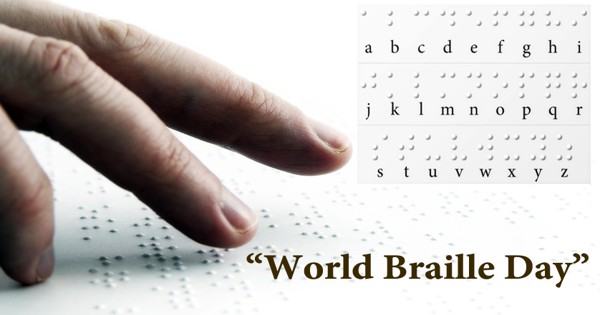Braille is a tactile representation of alphabetic and numerical symbols, as well as musical, mathematical, and scientific symbols, using six dots to represent each letter and number. Blind and partially sighted people use Braille (named after its creator in 19th century France, Louis Braille) to read the same books and periodicals that are written in a visual font. The 4th of January is designated as “World Braille Day,” which raises awareness of the value of braille as a medium of communication in the full realization of blind and visually disabled people’s human rights. The date was set by the United Nations General Assembly in November 2018 by a decree, and it commemorates the birthday of Louis Braille, the inventor of the Braille writing system. On January 4, 2019, the first World Braille Day was observed. This day is used by non-governmental organizations (NGOs) all over the world to raise awareness about the difficulties faced by visually disabled people and to inspire businesses and governments to provide economic and social resources for the blind. Competitions and public outreach activities are held by NGOs and disability groups. Teachers in schools instruct their students about the history of braille. Since World Braille Day is not a federal holiday, companies and government offices remain open. For those who are blind or visually impaired, the day serves as a reminder of the value of accessibility and freedom. Many companies, such as restaurants, banks, and hospitals, do not have braille versions of printed materials such as menus, statements, and bills in today’s world. As a result, people who are blind or have visual impairments often lack the right to select their own meals or keep their finances private. This day raises awareness of braille and other ways of open communication. Regardless of ability, everyone requires (and is legally entitled to) the same accommodations and service.
The birth of Louis Braille, the founder of the reading and writing system used by millions of blind and partially sighted people around the world, is commemorated on World Braille Day. During his research, he created a tactile code system that could allow the blind to read and write quickly and efficiently, influenced by the military cryptography of Charles Barbier of the French Army. Braille first introduced the results of his labors to his colleagues in 1824, when he was just fifteen years old. In 1829, he published “Method of Writing Words, Music, and Plain Songs by Means of Dots, for Use by the Blind and Arranged for Them,” his first book on the device he had invented. Braille is a touch-sensitive code that uses bumps and indentations on a surface to represent letters. Visually disabled people read and wrote using the Haüy method, which embossed Latin letters on thick paper or leather before Braille developed this type of communication. This was a difficult method that required extensive preparation and only encouraged people to read rather than write. Disgusted by this, Braille invented the Braille code at the age of 15. Despite the fact that there are now many different variations of Braille, Louis Braille’s code was laid out in small rectangular blocks called cells with raised dots in a 3 × 2 pattern. A letter, number, or punctuation was represented in each cell. Since Braille is a code, it can be read and written in any language or subject, including mathematics, music, and computer programming. Because of restrictive international copyright laws, braille books must remain within the country where they are made, as wonderful as it is and as much as it gives blind and partially sighted people. Since braille books cannot be exchanged across borders, the blind are unable to read books created outside of their own country. Unfortunately, only 5% of all written materials are actually provided in usable formats, meaning that only about 10% of all blind children in developing countries attend school due to a lack of teaching materials. Louis Braille was never able to see how valuable his invention was. He died in 1852, two years before the Royal Institute for the Blind Youth in France adopted a braille program. Braille was taught to blind children in schools throughout the United States by 1916. Rubix cubes, watches, Lego-style tiles, and other inventions are changing the way we use braille today, as well as helping to improve braille literacy.
















